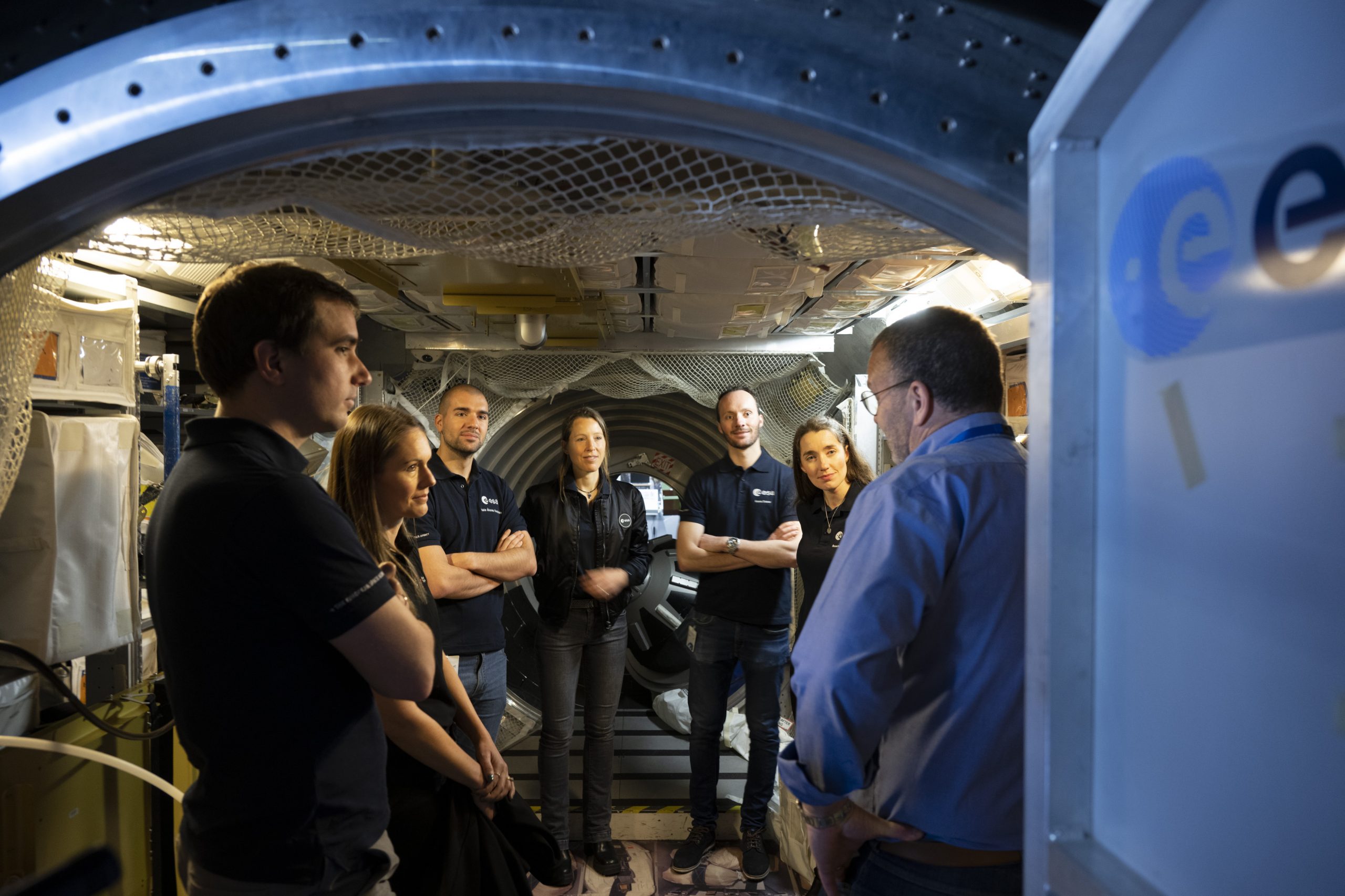The group included ESA astronaut candidates Sophie Adenot, Rosemary Coogan, Pablo Álvarez Fernández, Raphaël Liégeois, and Marco Sieber, ESA member of the reserve John McFall, alongside Katherine Bennell-Pegg from the Australian Space Agency. The candidates are currently undergoing basic astronaut training and familiarization primarily conducted at ESA’s European Astronaut Centre (EAC) in Cologne, Germany.
The path to mission-readiness
Basic training provides aspiring ESA astronauts with an overall familiarization of their forthcoming tasks and responsibilities. It includes general knowledge on space programmes and space agencies, as well as an introduction to various technical and scientific disciplines. They also got an overview of all Space Station onboard systems and spacecraft which service the station, along with special skills training including robotics and scuba diving for spacewalk training under water.
When they complete the one-year basic training programme, an ESA astronaut candidate becomes eligible for mission assignments, marking the transition to mission-specific training. This phase concentrates on tailored preparation for the assigned space-flight mission and involves more training time with partner agencies such as NASA.
As underlined by Alexander Gerst, ESA astronaut and lead of astronaut operations at EAC guiding the visit, “this trip is an important milestone not only in their basic training, but in their astronaut careers. Now they are ready to widen their perspective to get introduced into ISS real time operations, and the international partnership framework that we have with NASA and see how people operate at JSC.”
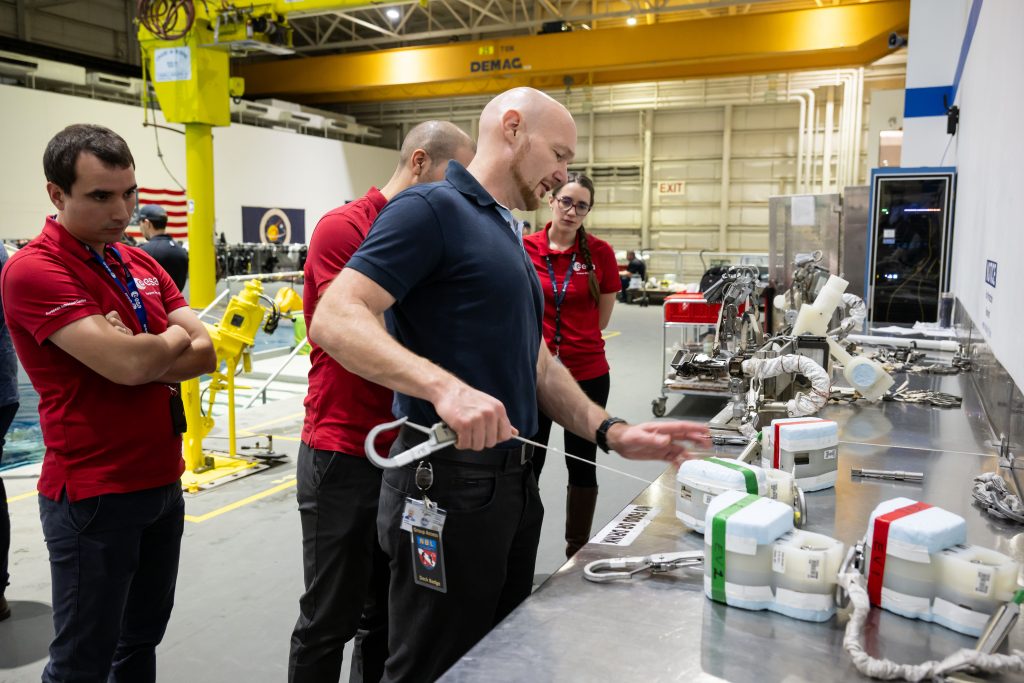
ESA Astronaut Candidates touring JSC’s Neutral Buoyancy Lab (NBL) at Sonny Carter Training Facility. Credits: ESA/NASA
Exploring the Johnson Space Centre
Their week-long stay at JSC offered an ideal opportunity for the group to familiarize with their upcoming training environments, meet their soon-to-be colleagues and counterparts as well as taking part in specialized training events.
First stop for ESA’s astronaut candidates: an immersive experience exploring the Space Station architecture through a full-scale mock-up.
“The moment I stepped into Building 9 and saw the full-scale mock-up was incredibly special. It was the first time I laid eyes on what could be my future home – a breath-taking marvel of human engineering that somehow felt surprisingly cosy”, says Marco.
Following the overview, the astronaut candidates were briefed on emergency procedures and contingency communication related to the Space Station. They were also taking part in introductory exercises to familiarize them with specific habitability systems.
“It was great having to learn more about some critical systems of the International Space Station and everything we will need in our everyday life later on, such as the astronauts’ planning tools, the storage systems and even the restrooms”, explains Raphaël.
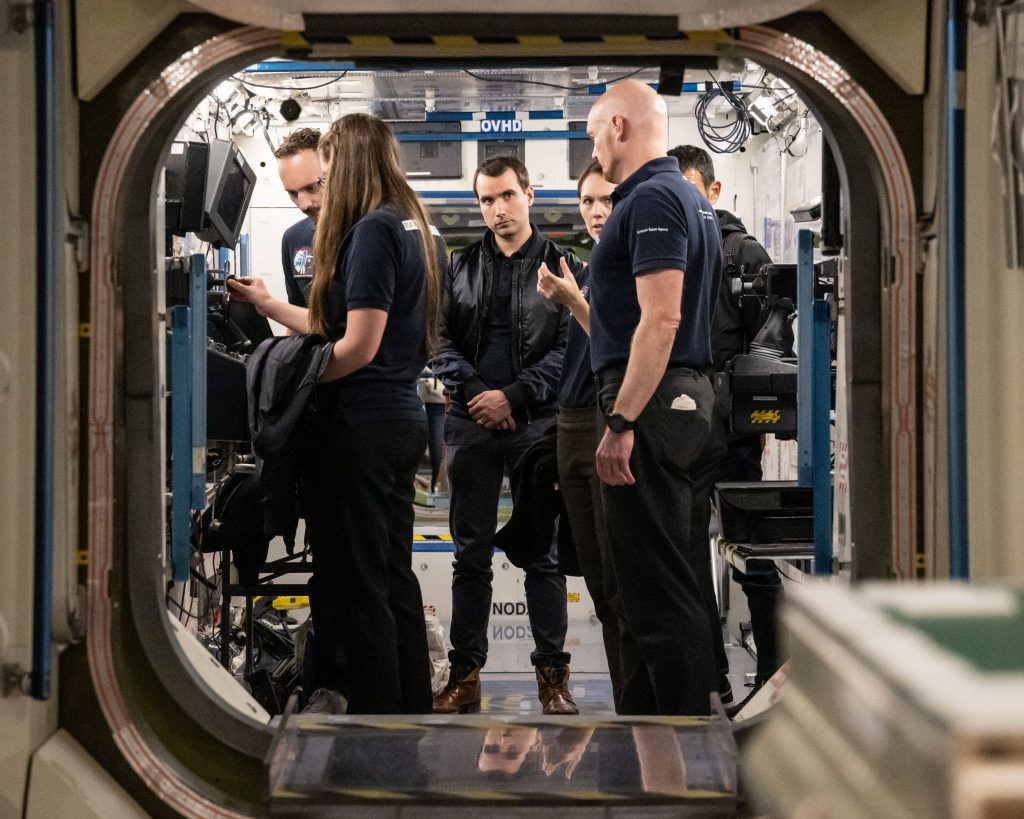
ESA Astronaut Candidates touring Johnson Space Center’s Space Vehicle Mockup Facility. Credits: ESA/NASA
The visit also gave the candidates a first-hand experience at JSC’s control centre, showcasing real-time communication and operational procedures with the Space Station, guided by Capcom. Capcom directly communicates with astronauts aboard their spacecraft at NASA’s Mission Control Center in Houston.
Meanwhile, EAC oversees communication through the European Communicator and Medical Operations (EUROCOM), linking ESA’s Columbus Control Centre, User Support and Operations Centres (USOCs) across Europe, and astronauts from diverse countries involved in ESA activities on the Space Station.
“Seeing Mission Control in action was like witnessing a perfectly choreographed performance. The teamwork, quick decisions, and expertise were incredible. It made me realize how much I love challenges and exploring. It inspired me that I could be part of that coordinated effort in the heart of space missions one day”, says Pablo.
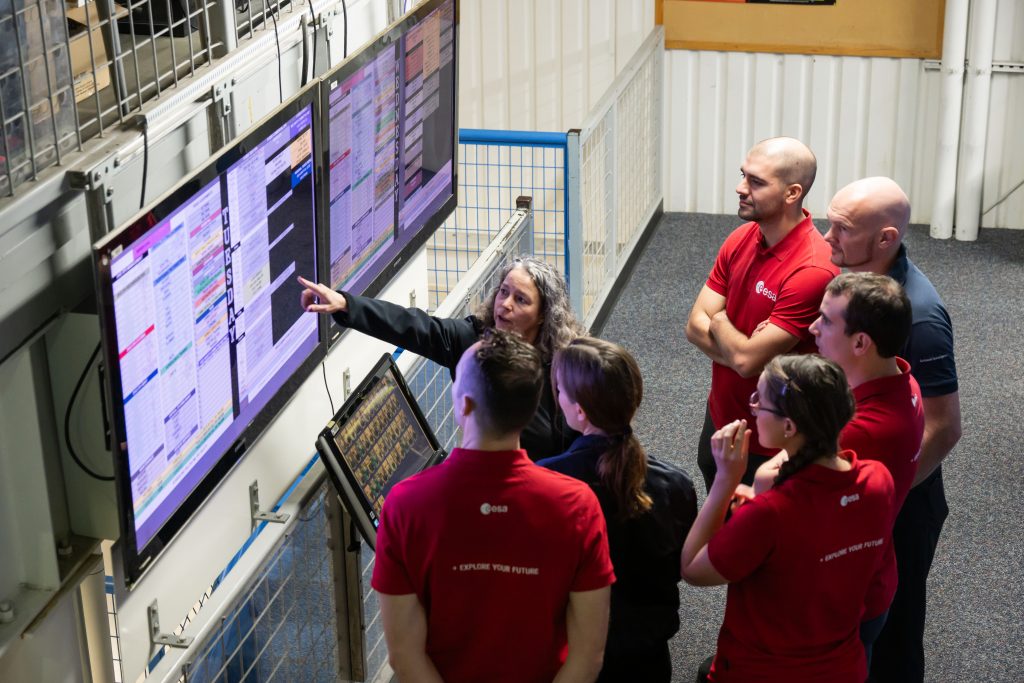
ESA Astronaut Candidates touring JSC’s Neutral Buoyancy Lab (NBL) at Sonny Carter Training Facility. Credits: ESA/NASA
Next on the programme was an all-time favourite of all future and experienced astronauts: spacewalk training. All the ESA astronaut candidates had previously received certification for diving in ESA’s Neutral Buoyancy Facility (NBF) at EAC as part of their basic training, preparing them for underwater spacewalk training aimed at simulating the weightless experience of space.
During their time at NASA’s JSC, the astronaut candidates had the opportunity to explore the 12-meter-deep Neutral Buoyancy Laboratory (NBL). This facility hosts a replica of the entire Space Station, where astronauts can perform underwater simulations of spacewalks, or extravehicular activities (EVA), using the US spacesuit, known as the Extravehicular Mobility Unit (EMU).
As part of their visit, while scuba diving themselves, the group observed a full space suit dive, providing them with a more comprehensive understanding of the process and first-hand experience in the simulation.
“I was very impressed to see all the modules of the Space Station replica underwater and the paths to follow during a spacewalk. Conducting an EVA training underwater requires a huge team of highly skilled personnel. I really enjoyed this dive: it helped me visualise what spacewalk training will consist of and I am really looking forward to come back to the NBL for the full EVA training flow!”, says Sophie.
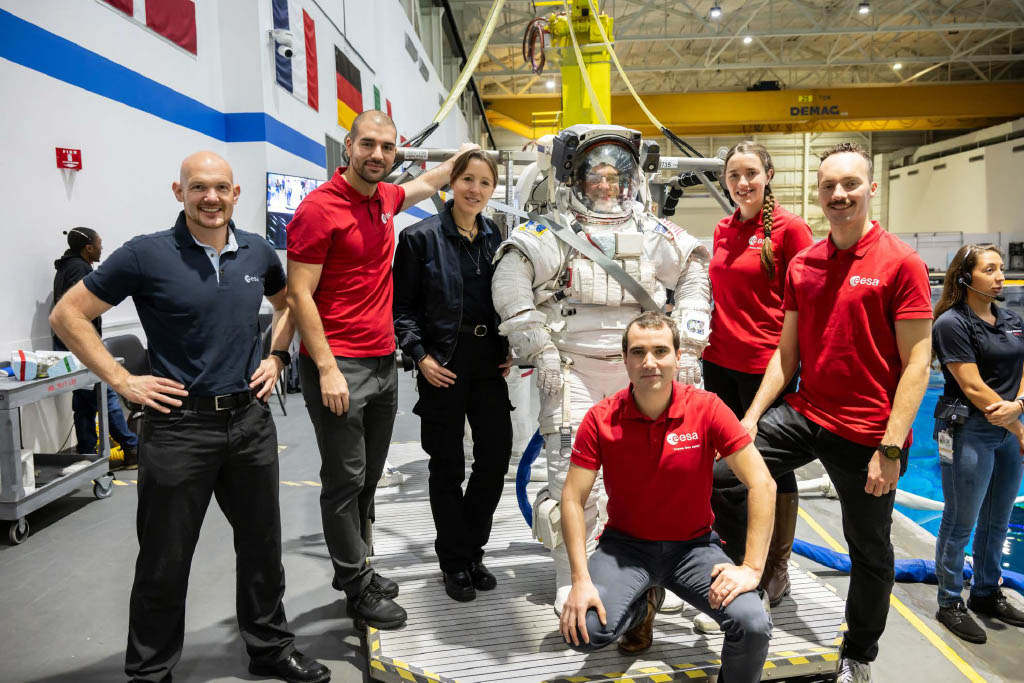
ESA Astronaut Candidates touring JSC’s Neutral Buoyancy Lab (NBL) at Sonny Carter Training Facility. Credits: ESA/NASA
Meanwhile, John McFall, a member of the ESA astronaut reserve and subject matter expert involved in the Fly! Feasibility Study, also benefited from the trip by taking part in selected events dedicated to the study’s goals. The Fly! study focusses on understanding what it would take for people with physical disabilities to become professional astronauts and safely participate in meaningful space missions.
‘’Like many things in human space exploration, the Fly! Study requires international collaboration, and we’ve been delighted to have had such great support from NASA already. This visit is an opportunity to build on that relationship and further increase awareness of this unique project and the progressive and aspirational work we’re doing at ESA”, explains John.
Beyond offering the first glimpse into a potential future training location and to round up the trip, the visit also served as a platform for our candidates to forge connections and interact with potential future colleagues from NASA, fostering professional relationships and knowledge exchange.
“I found it really useful to get to know our future colleagues at NASA, who we’ll be working with closely during assigned training. It was great to meet and share experiences with those who are on a journey very similar to our own”, says Rosemary.
Guiding the next generation
For ESA astronaut Luca Parmitano, currently serving as liaison officer between EAC and JSC in Houston, organizing the visit turned out to be a resounding success. Being the European representative on-site and well-acquainted with all the people and facilities, Luca took pleasure in guiding them around while passing on his experience and knowledge to the next generation.
“I think this was a very interesting time for all of us. I loved seeing the stars in their eyes when they entered the full-scale mock-up of the Space Station and then again during the dive inside NBL. It gave them a unique training opportunity and learning experience, complementing basic training, and providing them with a first real look and feel of future missions”, he says.
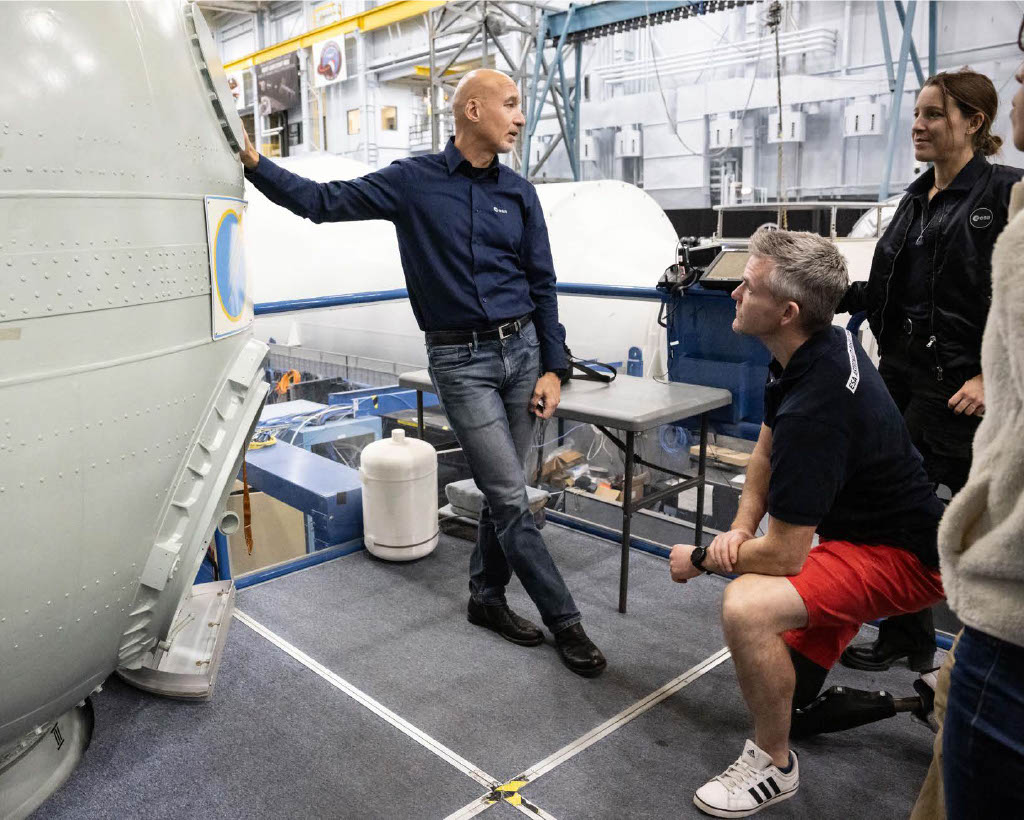
ESA Astronaut Candidates touring Johnson Space Center’s Space Vehicle Mockup Facility. Credits: ESA/NASA
Together with his fellow Shenanigan Alexander Gerst, they reflected on their first visit to the NASA facilities and designed the programme with a focus not only on training and professional development but also on providing a human perspective.
“It is great to see them thrive and acquire the skills they need to fly to the Space Station for complex long duration missions. It reminds me of my own time in basic training. It is an honour and a pleasure for me to now pass on some of my experience to the next generation”, adds Alexander.


